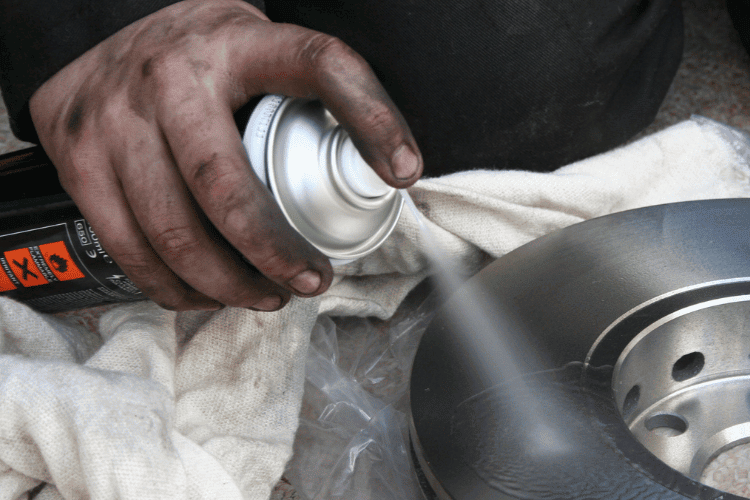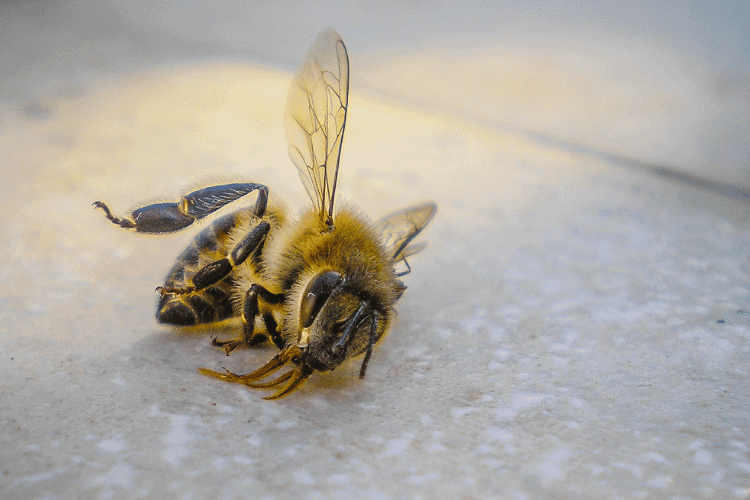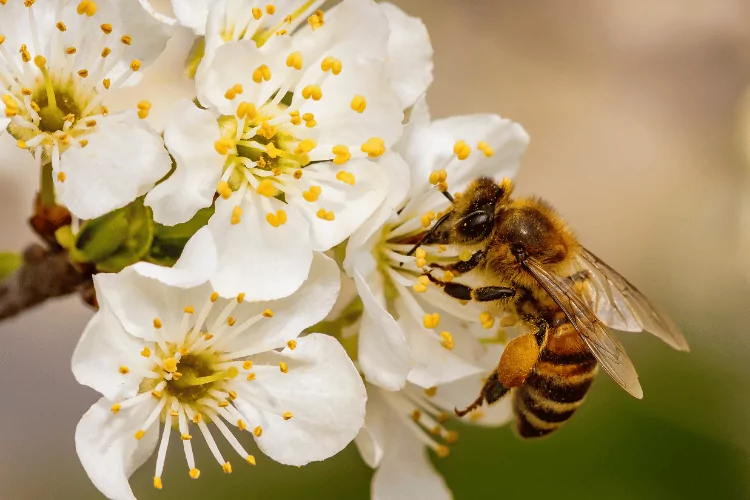A common concern among many beekeepers is the question, “Does brake cleaner kill bees?” The answer is yes, these cleaners can eliminate not only bees but also wasps and a diverse array of insects.
These cleaners are also widely used as a solution for getting rid of yellow jacket nests. There’s an abundance of YouTube videos showcasing its effectiveness in doing so.
In this article, we’ll explain why these cleaners are such potent insecticides. We’ll also uncover the rapidity of their effectiveness in killing insects.
Why Does Brake Cleaner Kill Bees?
We can consider brake cleaners a quick-acting insect killer. The key culprit behind its insecticidal effects is Methylene Chloride, a toxic chemical in these cleaners.
This substance and other chemicals are potent disruptors, interfering with the normal functioning of the bee’s muscles and nervous system.
They play a pivotal role in immobilizing and affecting the bodies of insects, including bees. Worse still, these toxic chemicals immediately impact bees upon contact.
Note that even if you want to eliminate a bee’s nest from your garden, these chemicals aren’t the best option. Instead, refer to this guide on how to get rid of bees for assistance.

How Does Brake Cleaner Work on Insects?
The chemical composition of brake cleaners causes rapid withering of the insect’s body. It also can seal the breathing pores or apertures on their bodies.
This dual-action mechanism results in suffocation, making it nearly impossible for the bee to survive once exposed.
These products can still have a fatal impact on the bees even if they aren’t directly used on them.
If these cleaner residues touch the bees, they can immobilize their wings, rendering them incapable of flight.
In addition, the residue of these cleaners can paralyze the muscles in the bees’ bodies. This rapid paralysis disrupts vital bodily functions, making it challenging for bees to perform essential tasks.
Still, the good news is that these products quickly evaporate after spraying. This minimizes the chances of bees getting exposed to their residue.
Brake Cleaner vs. Insecticides
The mechanism by which brake cleaners affect bees is somewhat similar to the insect-killing chemicals found in traditional wasp sprays.
Strong pyrethroids and pyrethrins, standard insecticide components, share similarities with the acetone and chlorine in brake parts cleaners.
This parallel mechanism involves the paralysis of insects upon contact, making these cleaners a formidable threat to bees.
How Quickly Does Brake Cleaner Act on Bees?
The impact of brake parts cleaner on bees is rapid. The poisonous substances within these products act instantly upon contact with a bee’s body, inducing paralysis or obstructing breathing.
In simple terms, bees exposed to brake cleaner face prompt and almost immediate death. This occurs within only seconds or, at most, a minute.
The instantaneous nature of the chemical’s effect highlights the need for caution in its usage.

Do All Brake Cleaners Kill Bees?
Yes, all brake cleaners pose a significant threat to bees. All these products’ chemicals are known for their extreme toxicity to insects, including bees.
However, it’s crucial to note that their potency varies based on the amount that comes into contact with the bees.
If you are using these cleaners to eliminate yellow jackets, there’s no need. Instead, check out this guide on how to get rid of yellow jackets.
How to Use Brake Cleaners Without Harming Bees
So, you’re now aware that brake cleaners pose a significant threat to bees’ lives. So, if you intend to use them in your backyard where bee colonies are present, it’s crucial to implement some protective measures. This is to ensure the safety of your pollinators.
The following tips will help you use brake cleaners without harming your bee colonies.
Use Cleaners Away from Bee Colonies
Avoid spraying brake cleaner in outdoor spaces closely located near bee colonies. As you are aware, the chemicals can be harmful to bees upon direct contact.
To err on the side of caution, we recommend using it in enclosed spaces, such as a garage.
Pick the Right Time
If you need to use brake cleaner outside, choose a time when bees are less active, such as early morning or evening.
This will minimize the likelihood of bees coming into contact with the cleaner.
Always Use the Nozzle
Utilize the nozzle that comes with the cleaner to spray a targeted stream rather than a wide-dispersing mist.
This helps keep the spray away from unintended areas where bees may come into contact with it.
Stay Away from Flowering Plants
Avoid spraying these cleaners on or near flowering plants, as they can harm any bees attempting to pollinate them.
Moreover, they can have a detrimental impact on the plants themselves.

Eliminate Any Residue
Even though these cleaners evaporate quickly, wipe down or rinse any outdoor surfaces that may have residue after using brake cleaner.
This helps prevent contamination of pollen, plants, or water that bees may interact with.
Additionally, have running water nearby in case you need to dilute any brake cleaner residue that hasn’t evaporated.
In general, use brake cleaner cautiously, avoiding spraying it near areas of bee activity. Clean up any residual product to limit bees’ exposure to it as well.
Furthermore, we recommend choosing more bee-friendly automotive chemicals when possible.
Wrapping Up
Having read this article, you know the answer to the question, “Does brake cleaner kill bees?” We’ve delved into the potency and mechanisms of these products.
Fueled by toxic ingredients like methylene chloride, the immediate impact of these cleaners poses a significant risk to bees, wasps, and other insects.
Additionally, the rapidity of its effects, within seconds, underscores the need for cautious use of these spray bottles near bee hives.
Given that, to use these cleaners without harming your local bees, you can refer to the tips provided above.
- Does Bleach Kill Bees? - April 23, 2024
- How Do I Get Rid of Ants Without Harming Bees? - April 16, 2024
- Do Bug Zappers Kill Bees? Completely Explained - April 9, 2024
